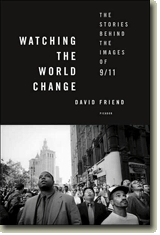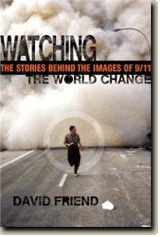November 2009 Archives
« Previous · Home · Next »
November 21, 2009
PRAISE FROM BRAZIL... AND HARTFORD
Hans Durrer, a German essayist, interpreter, and photography critic based in Brazil – whom I don’t know -- just posted a review of Watching the World Change on his blog, which has been picked up on several other blogs.
Durrer writes: "This is absolutely singular journalism (well-told, detailed, and with a keen sense for narrative flow). . . . [a] great book....He is a good writer, a tireless journalist, and, very probably, a workaholic - the research alone that went into this book is immense and impressive.” By all means, check out the full posting, HERE.
And this, from Louis Masur, the renowned historian and scholar of photography, American history, baseball, and Bruce Springsteen (no joke!), who is teaching Watching the World Change this semester at Trinity College in Hartford, Connecticut:
“I taught your book last night and it was the best discussion yet. A student started by asking if it was too soon for us to be 'studying' the images of 9/11. This led us on a path to discuss the role of photographs in our lives, how the images of 9/11 provided not only 'evidence' but also for some solace, how it is that we can look without feeling voyeuristic or complicit, which led us to making connections to a book about lynching photographs that we read earlier this semester.
“A lot of time was spent on the photo of Mike Kehoe, and on 'Falling Man,' and the controversy over the publication of Hoepker’s photograph. And also on how we think in terms of photographs (that amazing comment by [Tom] Brokaw about Sebastio Salgado), about just what a digital revolution means, and about the outrage of workers on the site about you and Harry Benson being there taking photos.
“We move next week to Art Spiegelman's In the Presence of No Towers and then we end with Phil Gourevitch's Standard Operating Procedure and Errol Morris’ film. It’s been a great semester and, on behalf of our seminar, thank you again for writing such a passionate, engaging, caring, eye-opening book.”
ONE SOLDIER'S STORY
I urge everyone to take a look at this powerful and exhaustive photo essay by Ian Fischer of the Denver Post. Now here’s a promising exploitation of the interactive potential of the medium, elegantly designed.
GUATANAMO ON THE HUDSON
Some of the Guantanamo internees will be coming to New York for trial, chief among them, Khalid Sheikh Mohammed, mastermind of the 9/11 attacks. While many have lambasted the decision to allow the perpetrators back into this city - let alone a courthouse or prison a stone’s throw from Ground Zero - what I find most perplexing is the fallacy that justice will be served here.
How is it possible to convene a judicial proceeding in these circumstances and in this venue? How on earth can KSM and his compatriots get what would be considered “a fair trial” within the jurisdiction of Manhattan? And where, in America, would they ever find a “jury of their peers”? While I found Guantanamo to be a pure travesty, one that ran counter to every notion of civil behavior in a time of war, I find the current scenario to be an invitation for a kangaroo court.
We are in a time of war. These are combatants, some of whom have already admitted war crimes. If there is a trial, the trial should be held before a military tribunal.
November 1, 2009
THE RIGHT CLIPS OF DOVER
DOWD ON DOVER. Maureen Dowd offers a keen observation in today’s Times.
She points out that some Republicans have criticized Barack Obama for allowing photographers to catch him during a somber visit to Dover Air Force Base, where he met the arriving coffins of 18 American soldiers recently killed in battle; Dowd notes that the ever present Liz Cheney even went so far as to say, on Fox News radio, “I think that what President Bush used to do is do it without the cameras.”
Uh, not so fast. As Dowd remarks (and as I mention in Watching the World Change), Bush never once attended a funeral for an Afghan or Iraq War G.I., never once visited Dover – and, during his tenure, forbid all press photography of arriving coffins. In Dowd’s view, Bush, through the photo-ban, was “trying to airbrush the evidence that the wars he started were not the cakewalks he had promised.”
GAINES AGAINST THE GRAIN. And check out this blogpost by Jim Gaines, the only man to edit People, Life, and Time (now engaged as editor-in-chief at the visually daring online magazine, Flyp). He argues that photojournalism didn’t necessarily go the way of its compatriots roll film and silver halide. Instead, he finds a surprising silver lining for photojournalists amid the thunderheads of the digital revolution.


